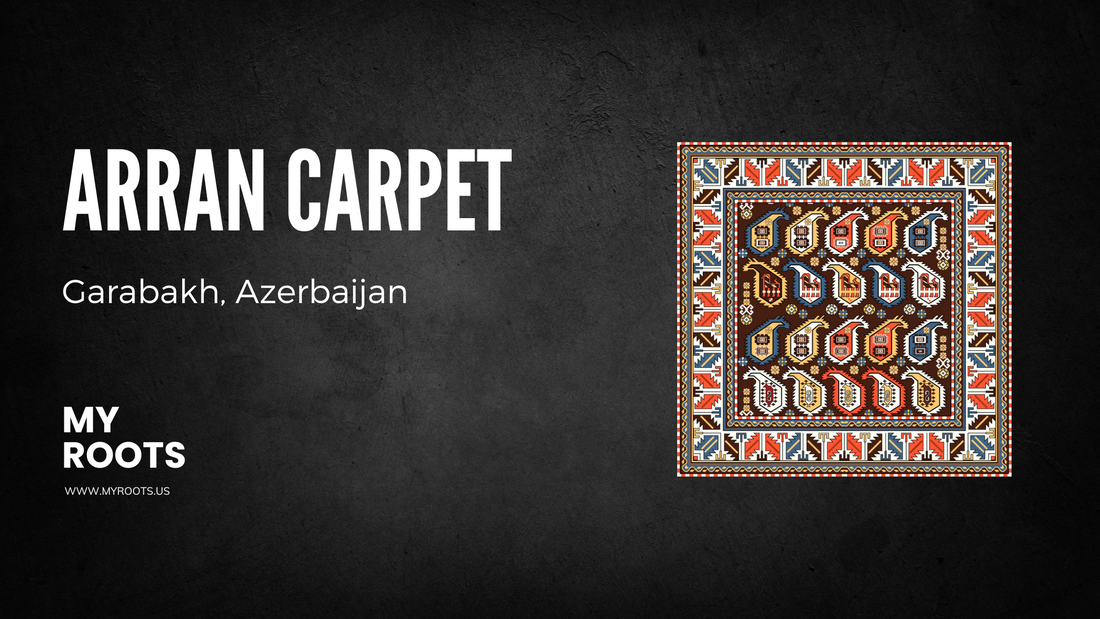
The Arran Patterns – Tasseled Buta and Symbolic Storytelling
Share
The Arran patterns, rooted in the rich history of the Karabakh region, stand as a testament to centuries of cultural expression and artistic mastery. Originating in Barda, the vibrant center of the Arran region during the 9th-10th centuries, these patterns are a cornerstone of Azerbaijani textile heritage. With their intricate designs and deep symbolism, the Arran patterns continue to captivate art and history enthusiasts around the world.
The Tasseled Buta Motif: A Symbol of Unity and Life
Central to the Arran patterns is the tasseled buta motif, a paisley-like design often adorned with depictions of birds and abstract shapes. This motif symbolizes fertility, unity, and the cyclical nature of existence. The use of birds in the design reflects a harmonious relationship with nature, while the abstract shapes evoke the philosophical depth of the region's art. The vibrant color palette, blending earthy tones with vivid accents, further enhances the timeless appeal of these patterns.
The Historical and Cultural Context
The Arran carpets were not just decorative items; they served as cultural artifacts, embodying the social, economic, and artistic values of the communities that created them. From their early production in Barda to their proliferation in Jabrayil weaving factories, these carpets have always been deeply intertwined with the region’s identity.
Resources for Further Exploration
- Azerbaijani Carpet Museum: Dive deeper into the history and significance of Arran patterns through exhibits and collections.
- UNESCO's Intangible Cultural Heritage List: Explore how Azerbaijani carpet weaving has been recognized for its cultural importance.
